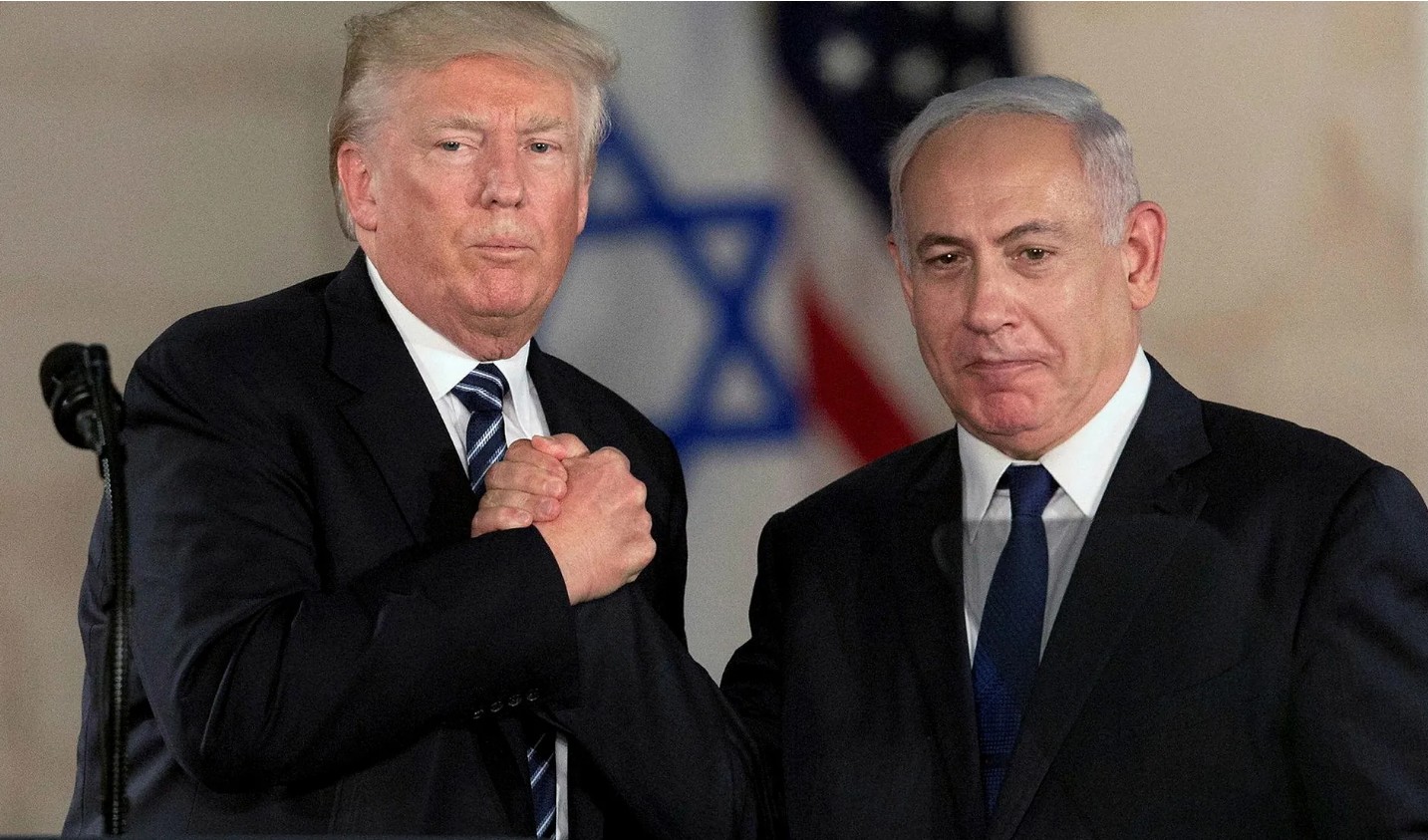US strikes against Iran raise more questions than answers
By James M. Dorsey
Cutting through the fog of
information wars that thrive on mis-and dis-information is crucial world
wracked by brutal wars, unimaginable humanitarian crises, and increasing
authoritarianism.
For the past 15 years, The Turbulent
World with James M. Dorsey seeks to empower readers, listeners, and viewers to
form informed opinions of their own by providing independent, hard-hitting
reporting and analysis of the politics of the Middle East and the Muslim world.
Newsletters and podcasts like The
Turbulent World fill an important gap in an era in which many news
organisations have reduced or abandoned coverage of international and pressure
on reporters and analysts who honour the principles of fairness and accuracy is
on the rise.
That makes it more crucial than ever to
ensure the survival of newsletters such as The Turbulent World, which rely
exclusively on the support of their readers.
If you share these values and can afford it
please click here.
To participate in a poll, listen to the
podcast, or watch the video, click here.
A subscription gets you full access to
the newsletter, archive, podcasts and videos. Never miss an update.
The United
States bunker-busting air strikes against three Iranian nuclear sites raise
more questions than answers, fuelling a war of narratives as the world waits
for what comes next.
This
weekend, President Donald J. Trump celebrated the strikes as “a spectacular military success”
in televised remarks, even if
it was unclear what that means and despite US intelligence and, by implication,
the International Atomic Energy Agency’s (IAEA) assessments that Iran was not
developing nuclear weapons.
Mr. Trump
said the targeted sites – Natanz, Fordow, and Isfahan – had been “completely
and totally obliterated.”
Taking a
more cautious attitude without contradicting Mr. Trump, US Joint Chiefs of
Staff Chairman General Dan Caine said damage assessment showed the targeted sites
had sustained “severe damage and destruction” but would not confirm that they had been
“obliterated.”
Instead of
listening to the US intelligence community and the international agency, Mr.
Trump echoed Israeli claims that Iran was months, if not weeks, away from
possessing nuclear weapons, raising the question about who the president
listens to, the US intelligence community or Israeli Prime Minister Binyamin Netanyahu.
On Sunday,
Mr. Trump suggested that he shared Mr. Netanyahu’s desire for
regime change, hours
after his Vice President JD Vance and Secretaries of State and Defence Marco
Rubio and Pete Hegseth, insisted that the US strikes targeted Iran’s nuclear
facilities, not the country’s regime.
“It’s not
politically correct to use the term, ‘Regime Change,’ but if the current
Iranian Regime is unable to MAKE IRAN GREAT AGAIN, why wouldn’t there be a
Regime change??? MIGA!!!,” Mr. Trump said on Truth Social, his social media
platform.
Mr. Trump’s
seeming embrace of regime change could shape how Iran responds to the US
strikes.
While the
administration declared that, at the very least, the strikes had significantly
set back Iran’s nuclear programmes, Iranian officials asserted that the United
States had failed to destroy Iran’s uranium stockpile, including some 410
kilogrammes enriched to 60 per cent purity.
The
officials said authorities moved the uranium to safe locations in advance of the US strikes.
Major
General Mohsen Rezaie
"All
enriched materials…are in secure locations. We will come out of this war with
our hands full,” said Major General Mohsen Rezaei, a member of Iran’s National
Security Council and a former commander of the Islamic Revolutionary Guard
Corps (IRGC).
It was
unclear when Iran moved its stockpile to a secure location. Iranian officials
said the United States had informed Iran that it would hit the country’s
nuclear sites hours before the strikes to make clear that it did not seek a
prolonged confrontation with Iran.
International
Atomic Energy Agency inspectors in Iran haven’t been able to verify the
location of the country’s stockpile of near-bomb-grade uranium for more than a
week.
The
inspectors last saw Iran’s uranium inventory — enough to make 10 nuclear
warheads --- stored underground at the targeted Isfahan atomic facility.
Speaking to
Al Jazeera, Tariq Rauf, the former head of the IAEA’s nuclear verification
policy, said, “The US bombings have complicated tracking Iranian uranium.”
Mr. Rauf
cautioned that “it will now be very difficult for the IAEA to establish a
material balance for the nearly 9,000 kilograms of enriched uranium, especially
the nearly 410 kilograms of 60 per cent enriched uranium.”
In addition
to not knowing where Iran’s stockpile is, inspectors will no longer be able to
rely on environmental sampling to detect the potential diversion of uranium.
“Now that
sites have been bombed and all classes of materials have been scattered
everywhere, the IAEA will never again be able to use environmental sampling. Particles
of every isotopic description have infinite half-lives for forensic purposes,
and it will be impossible to sort out their origin,” said Robert Kelley, who
led inspections of Iraq and Libya as an IAEA director.
Even so,
Iran’s problem is that it can’t be certain how secure the locations are where
the uranium has supposedly been moved to.
“These will
have almost certainly been moved to hardened and undisclosed locations, out of
the way of potential Israeli or US strikes,” said Darya Dolzikova, a senior
research fellow at the Royal United Services Institute, a London-based think
tank.
If the death
on Friday of an unidentified Iranian nuclear scientist, an alleged
weaponisation specialist. is anything to go by, Iran’s uranium may be less
secure than the country would like the world to believe.
Israel said it killed the scientist in a safe house where he was hiding
to escape assassination. He was the 10th nuclear expert assassinated by Israel
in the last ten days.
Military
analysts note that, depending on how deep underground Iran’s nuclear facilities
are, the US may need several bombings to destroy them at the risk of being
sucked into an expanding regional conflagration.
Mr. Trump
increased that risk by publicly supporting regime change.
In
hindsight, Mr. Trump may have anticipated his expression of support when he
suggested in his televised remarks that the United States will launch further
attacks against Iran if it refuses to return to nuclear negotiations on his
terms, which Iran has repeatedly rejected.
Despite Mr.
Trump’s escalatory rhetoric, Iran is likely to calibrate its response to the US
air strikes carefully.
While it is
difficult to see Iran forgoing its perceived right to retaliate, it is likely
to want to ensure that it does so in a manner that keeps the door open to
negotiations.
A restrained
Iranian response would also cater to advice proffered by its partners, China
and Russia, who do not want to see an all-out regional war and are likely to
primarily offer Iran political and diplomatic support rather than military
participation.
Russia and
China are sure also to have advised Iran not to make good on threats to block
the Strait of Hormuz, a major global trade artery through which much of the
world’s oil and gas supplies flow, because this would increase the risk of further
intervention in the war by the United States and other Western powers.
Even so, Dmitry
Medvedev, the deputy chairman of Russia’s Security Council and a former Russian
president, suggested that his country could help Iran build nuclear weapons.
“The
enrichment of nuclear material — and, now we can say it outright, the future production of nuclear
weapons — will continue. A number of countries are ready to directly supply Iran with their own
nuclear warheads,” Mr. Medvedev, widely viewed as a gadfly, said.
When asked
about Mr. Medvedev’s comment, US Vice President Vance was
dismissive.
“I don’t know that that guy speaks for President Putin or the Russian
government,” Mr. Vance said, noting that Russia has “been very consistent that
they don’t want Iran to get a nuclear weapon.”
Meanwhile,
the Iranian parliament voted to close the Strait less than 24 hours after the US
strikes in a decision that has yet to be approved by Iran’s National Security
Council.
The vote
heightened concerns across the Middle East about the fallout from the US
strikes.
Gulf states
await potential Iranian retaliation against US military and diplomatic
facilities on their soil. In addition, they will also be worrying about the possible
environmental fallout of the US bunker-busting bombs taking out Iranian nuclear
facilities.
That has not
stopped Jordan and Saudi Arabia, despite their expressions of concern, from
helping Israel intercept Iranian missiles fired at the Jewish state.
Sirens
regularly warn residents of the Jordanian capital, Amman, about overflying
missiles. Jordan frequently intercepts, at
least, some of those missiles, while Saudi Arabia has reportedly allowed Israel to shoot
missiles down in its airspace.
Turkey and
Iraq dread an expected influx of Iranian refugees if hostilities continue or,
even worse, expand. Together with Pakistan, Iraq, and Azerbaijan, Turkey
worries about the potential spillover effect of potential unrest among ethnic
Iranian minorities like the Kurds, Azeris, Arabs, and Baloch that straddle
their borders.
For their
part, Egyptians fear that war is inevitable amid concern that Israel could
attempt to drive Gaza’s Palestinian population out of the Strip and into
Egypt’s Sinai Peninsula.
The question
on everybody’s mind is: Will an expanding conflict envelop the Middle East, and
if so, can it be contained to the region?
The answer
will likely depend on Iran’s response to the US strikes and whether it strikes
at US, Israeli, and/or Jewish targets elsewhere in the world or lets Israel
carry the brunt of its retaliation.
Channel News Asia published an earlier version of this
story.
Dr. James M. Dorsey is an Adjunct Senior Fellow at Nanyang Technological
University’s S. Rajaratnam School of International Studies, and the author of
the syndicated column and podcast, The Turbulent World with
James M. Dorsey.










Comments
Post a Comment